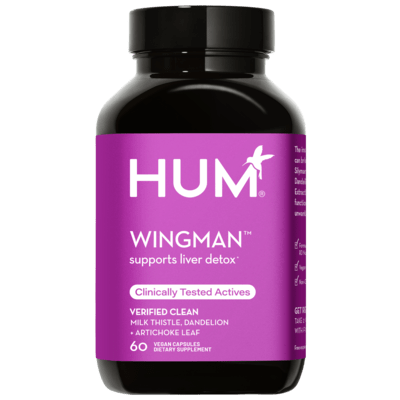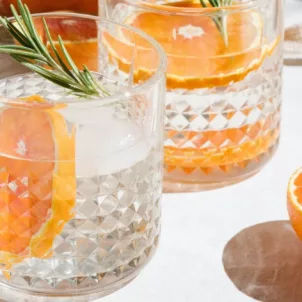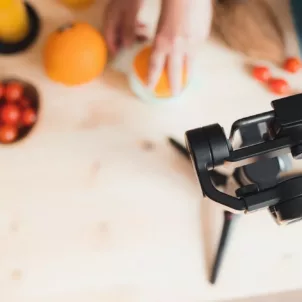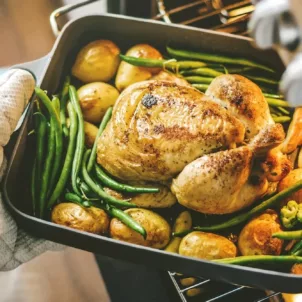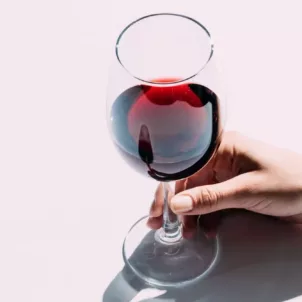Mindful Drinking is the Answer to Forgoing Your Hangovers for Good
Whether you’re sober curious or simply want to ditch your hangovers, here’s a guide to mindful drinking.
In the past few years, it would seem like the alcohol industry is reaching a tipping point. New product categories like hard kombuchas have popped up, purchasing alcohol online has never been easier, and of course, everyone is doing a hard seltzer. While you might think the pandemic may have triggered a spike in stress-related drinking, the general trend is actually sloping downward.
The decline may be driven in part by Millenials (those born from around 1981-1996). Millennials have been deemed by some to be “Generation Sober” for their interest in doing sober streaks or going booze-free altogether. Americans are drinking, on average, 3.6 drinks per week, compared to 4.5 per week in 2015, per a July 2021 Gallup poll. It’s the lowest number of drinks per week that the yearly survey has recorded since 2001. Further, only 18 percent of poll respondents believe they sometimes drink too much, down from 25 percent in 2015 and around 33 percent in the mid-to-late 1980s.
What is Mindful Drinking?
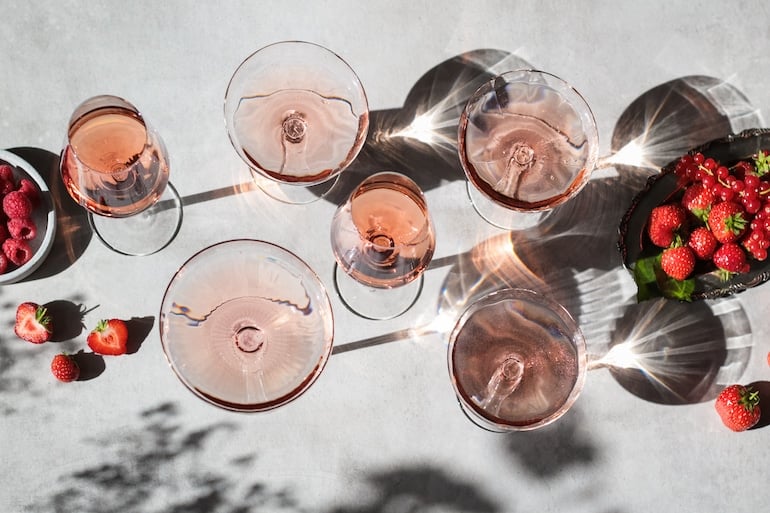
That phrase, “think they drink too much,” is often the inspiration for the sober curious to embark on a mindful drinking lifestyle. Put simply, mindful drinking, also sometimes called intuitive drinking, is putting an end to drinking without thinking. (It’s become such a community movement, there are even entire festivals dedicated to mindful drinking.)
Mindful drinking “is centered on being mindful of what you consume and why you are consuming it,” explains Katherine Brooking, RD, co-founder of the nutrition news company Appetite for Health in San Francisco. “To drink more mindfully, ask yourself when you drink, ‘why am I drinking?’ Is it an event, like a wedding or holiday where drinking is part of the ritual? Is it a night out with friends? Are you alone? Is it to feel more part of a group, to alleviate stress or sadness? It’s important to understand the rationale and emotions behind our decision to drink.”
Mindful drinking is not to be confused with getting sober due to an alcohol dependency or history of alcohol abuse.
Laura Burak MS, RD, registered dietitian, founder of GetNaked® Nutrition and the author of Slimdown with Smoothies is familiar with witnessing her parent peers joke about drinking too much or discussing if it’s too early for a drink on the mom text chain. Or do more than just discuss it: “It can be all too common to down one too many drinks in order to relax after a marathon of a day or week,” Burak says. She recommends assessing if your alcohol intake could be having an impact on your health.
“Think about whether it may be inducing more anxiety or preventing you from progressing in your overall physical health goals like improving your lab work or losing excess weight and if so, abstain for a while or simply cut down.”
Reflecting on how you feel the morning after drinking may also be enough to convince you it’s time to try mindful drinking: A pounding headache. Dizzy, queasy, and all-around uneasy sensations. Head-to-toe fatigue.
And while it’s more on the extreme end of things, alcohol consumption is correlated to about 95,000 American deaths per year, according to the U.S. Centers for Disease Control and Prevention (CDC), equivalent to about 260 deaths per day.
Rather than popping open a bottle of wine with dinner every night out of habit, or taking shots with friends at the bar on a Friday or Saturday night to be part of the group, mindful drinking involves reflecting on what alcohol is doing for you—and to you—before taking a sip.
What Does it Mean to Be “Sober Curious,” Exactly?
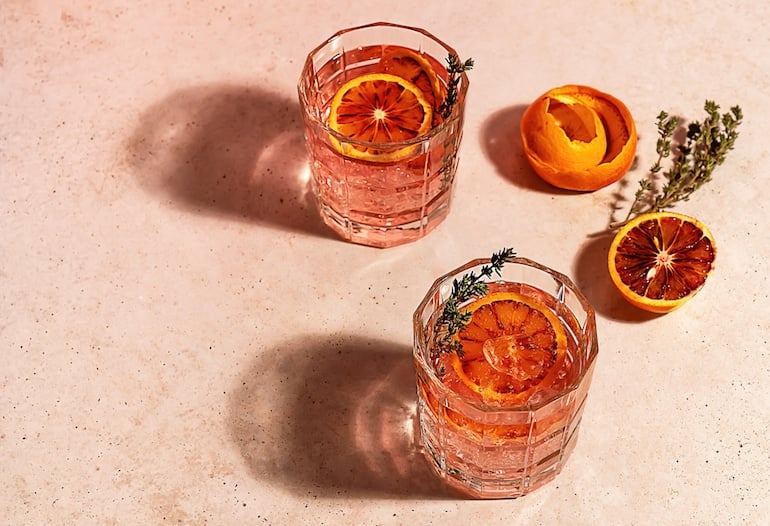
While being sober refers to long-term abstinence from alcohol, Brooking says that sober curiosity is generally about shorter-term “trials,” such as Dry January and Sober October when someone might opt to go alcohol-free for the month.
Most people would benefit from taking a breather once in a while just to notice how different our bodies feel without it, Burak believes. If you think alcohol is becoming too much of a mainstay in your life and are craving a healthy break, you can try giving it up for a period. “But like everything, I never recommend going to extremes and completely eliminating anything* you enjoy for pleasure as it can lead to binging,” she says.
That said, there is a big difference between having a problem with alcohol where you are unable to stop drinking, versus just wanting to take a break, Burak says. “The line of severity can get fuzzy though and many people are in denial of their excess intake, so of course it is recommended to seek professional help and consider entering a sobriety program if alcoholism is in your family history and is negatively affecting your daily life.”
* If you or someone you know does feel like alcohol is becoming a dependency or addiction, speak to your doctor or call the Substance Abuse and Mental Health Services Administration’s National Helpline. It is a free, confidential, 24/7, 365-day-a-year treatment referral and information service (in English and Spanish) for individuals and families facing mental and/or substance use disorders.
How Does Intuitive Drinking Compare to Intuitive Eating?
If you’re familiar with intuitive eating—the practice of tuning into your body to determine what and when to eat—intuitive drinking is roughly the same concept.
While intuitive eating has some core principles that don’t apply to intuitive drinking, a few do:
- Cope with your emotions with kindness
- Respect your body
- Honor your health
The biggest difference between the two practices? “You need food to survive but alcohol is not a nutrient, it’s actually a toxin, and you never need to drink it, period,” Burak says. “However, enjoying a drink mindfully like you enjoy an appropriate amount of food can have a similar feeling. A nice meal and drink with a friend is a very different situation than a pattern of binge drinking and eating until you feel stuffed,” Burak says.
So as a mindful drinker, you take the time to consider the “why” behind your drink, plus the “what” that you’re really in the mood for, “like you do with quality food, then you tend to naturally have an appropriate amount of both and it’s a completely different way of living,” Burak explains.
Mindful Drinking Tips for the Sober Curious
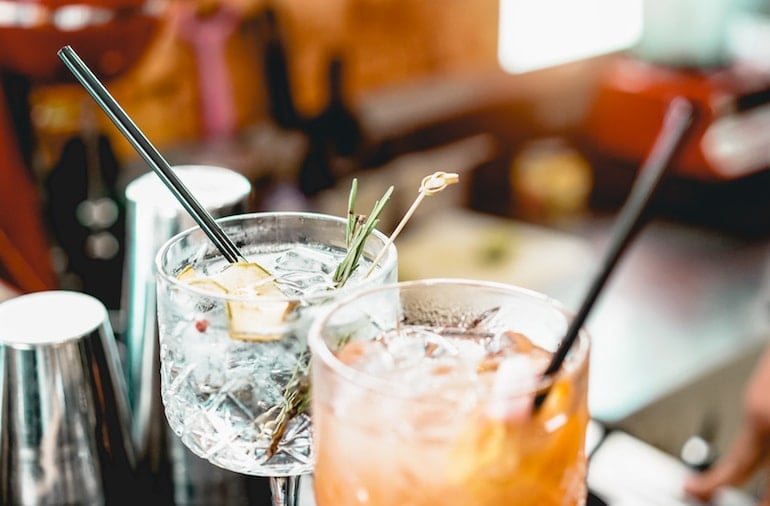
There are many benefits to mindful drinking—both mental and physical, Brooking confirms.
“It’s always good to check in with yourself to understand your decisions. It’s part of becoming more self-aware. And from a physical standpoint, being mindful about your alcohol intake can lead to drinking less,” she says.
Plus, many chronic health conditions can be improved or prevented by reducing or eliminating alcohol. Alcohol intake can also negatively affect eating habits (hello, cravings for greasy food and sugar!), sleep quality, and your motivation to exercise the next day.
“In other words, too much booze can turn your healthy habits upside down,” Burak says. “Your motivated energized veggie-eating self can quickly become irritable, lazy, and craving junk food after just a few innocent drinks.”
Alcohol-Free Drinks for the Mindful Drinker
Feeling inspired to step down your spirit consumption? “Generation sober” and those excited to serve them have developed countless innovations in the past decade or so, and now your options go far beyond a club soda, lemonade, soda or cranberry juice on ice. These are just a few:
Best Ready-to-Drink Option: Bitters & Soda Variety Pack, $30
With just 5 to 10 calories and 0 grams of sugar per can, Bitters & Soda Zero-Sugar Variety 12-Pack comes infused with flavor from whole spices, fruit peels and bitter roots. Instead of promoting inflammation, as alcohol can, these lemon-lime, ginger-turmeric, dry aromatic and grapefruit sparkling drinks contain anti-inflammatory ingredients.
Best Alcohol-Free Spirit: Seedlip Cocktail Mixed Trio Gift Set, $65
If you prefer to shake or stir up your own bar-inspired beverages, stock up on Seedlip Cocktail Mix Trio. The botanical blends taste similar to gin, just minus the liquor. This gift kit includes three varieties, Spice 94 (warm and bright, thanks to allspice, cardamom and citrus), Garden 108 (floral and herbaceous) and Grove 42 (zesty and layered, with citrus and spice notes).
Best Alcohol Free Beer: Partake Brewing Non-Alcoholic Blonde Craft Brew, $30
In place of your typical pale ale or porter, crack open a Partake Brewing Non-Alcoholic Craft Blonde (which also comes in IPA, Dark, Red Ale and Pale Ale styles). It’s made with similar ingredients as beer—water, hops, yeast and barley—and is bubbly, too, just comes sans-alcohol. Clean and crisp, Partake Blonde has 15 calories and 3 grams of carbs per serving.
Best Sparkling Alcohol-Free Wine: Codorniu Zero Brut Alcohol-Free, $13.49
As festive as Champagne, cava, prosecco or sparkling wine yet without the potential brain pain the next day, Codorniu Zero Brut Alcohol-Free tastes like tropical fruit, citrus and apple. It’s gentle fizziness really accentuates the floral aroma. “Nearly every non-alcoholic version of Champagne and Prosecco has left me with a (literal) bad taste in my mouth,” one fan admits. “This was a surprising change from the overly sweet and apple-y notes associated with every other brand that I tried!”
Best for A Sans-Alcohol Glow: Collagen Pop , $30
If flavor is what you’re craving, drop one of HUM’s Collagen Pop tablets into a glass of still or sparkling water. Beyond offering refreshing lemon and strawberry essence, these tablets come packed with vitamin C and collagen to hydrate skin and support collagen production.
